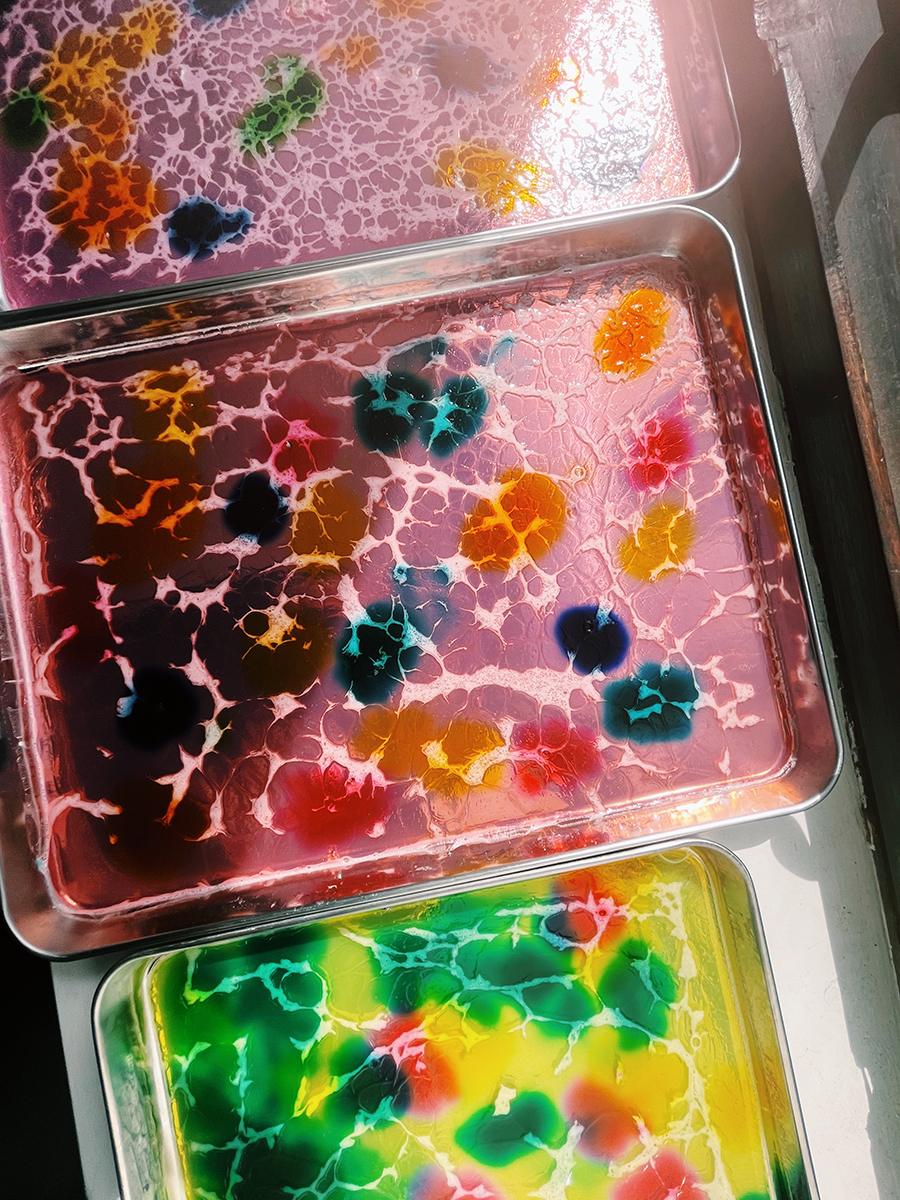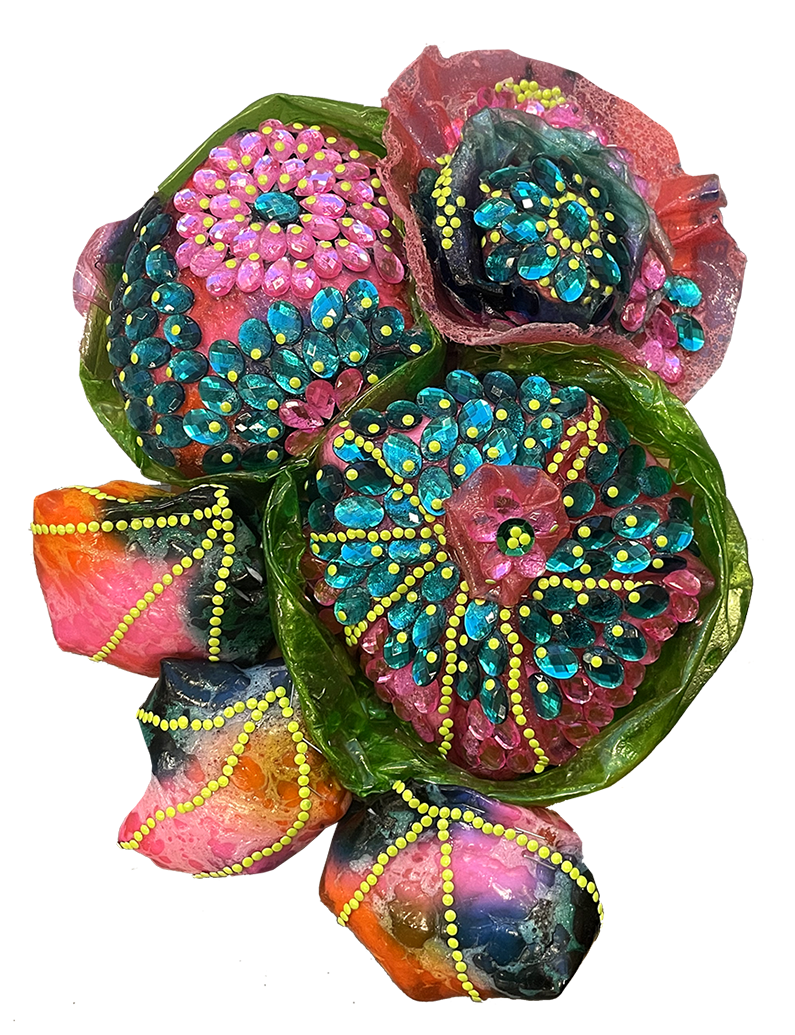BIOMATERIAL PROCESS




Base Ingredients
1. Water
2. Agar Powder
3. Vegetable Glycerine
Recipe adapted from FABTEXTILES Bioplastic Cookbook by Margaret Dunne / Anastasia Pistofidou
Characteristics
Shiny, transparent, and able to take on various textures and colours, agar bioplastic is a biodegradable plastic/vinyl/leather alternative which can be used to sculpt accessories and incorporated into garments.
![]()
1. Water
2. Agar Powder
3. Vegetable Glycerine
Recipe adapted from FABTEXTILES Bioplastic Cookbook by Margaret Dunne / Anastasia Pistofidou
Characteristics
Shiny, transparent, and able to take on various textures and colours, agar bioplastic is a biodegradable plastic/vinyl/leather alternative which can be used to sculpt accessories and incorporated into garments.
Process
In a small saucepan, combine water, vegetable glycerine, and agar powder. Turn up the heat. Stir consistently until the mixture begins to coat the back of a spoon, at which point turn down your heating slightly to prevent the agar from discolouring. Pour into a baking tray pan and leave to cool in a well-ventilated area for 48-72 hours depending on the size of your bioplastic sample.
To acquire different colours, I experimented with basic food-grade colourings and for texture, I added millet grains and plant-based liquid soap for a foam-like pattern reminiscent of lace when set. Ideally for future development I hope that this can be translated into plant and natural tints as well to improve the material’s biodegradability. In terms of increasing the textile’s strength and durability, I have also experimented with casting with pieces of deadstock organza voile into panels for increased textile strength and durability.
In a small saucepan, combine water, vegetable glycerine, and agar powder. Turn up the heat. Stir consistently until the mixture begins to coat the back of a spoon, at which point turn down your heating slightly to prevent the agar from discolouring. Pour into a baking tray pan and leave to cool in a well-ventilated area for 48-72 hours depending on the size of your bioplastic sample.
To acquire different colours, I experimented with basic food-grade colourings and for texture, I added millet grains and plant-based liquid soap for a foam-like pattern reminiscent of lace when set. Ideally for future development I hope that this can be translated into plant and natural tints as well to improve the material’s biodegradability. In terms of increasing the textile’s strength and durability, I have also experimented with casting with pieces of deadstock organza voile into panels for increased textile strength and durability.
